Collective Medias, Narrative Futures: Reading the Egaro Photo Festival
Recently, India Art Fair celebrated its fifteenth edition from 1 – 4 February, 2024, with an attempt at widening its roster of alternative bodies of work showcased in the capital. And one of the projects presented under the Institutions section showcased a curated selection of photography and film-based media by the Egaro Photo Festival. An independent photo festival based in Tripura, it first started in 2016 and has since been showcased bi-annually at Nazrul Kalakshetra, Agartala. With four editions completed till 2023, including a virtual edition during the pandemic, Egaro (which translates to eleven in Bengali) spotlights work by eleven artists from the South-Asian region at each edition of the festival. Over the last few years, Egaro has garnered praise and have made an incredible mark towards visibilizing art practice from north-eastern India.
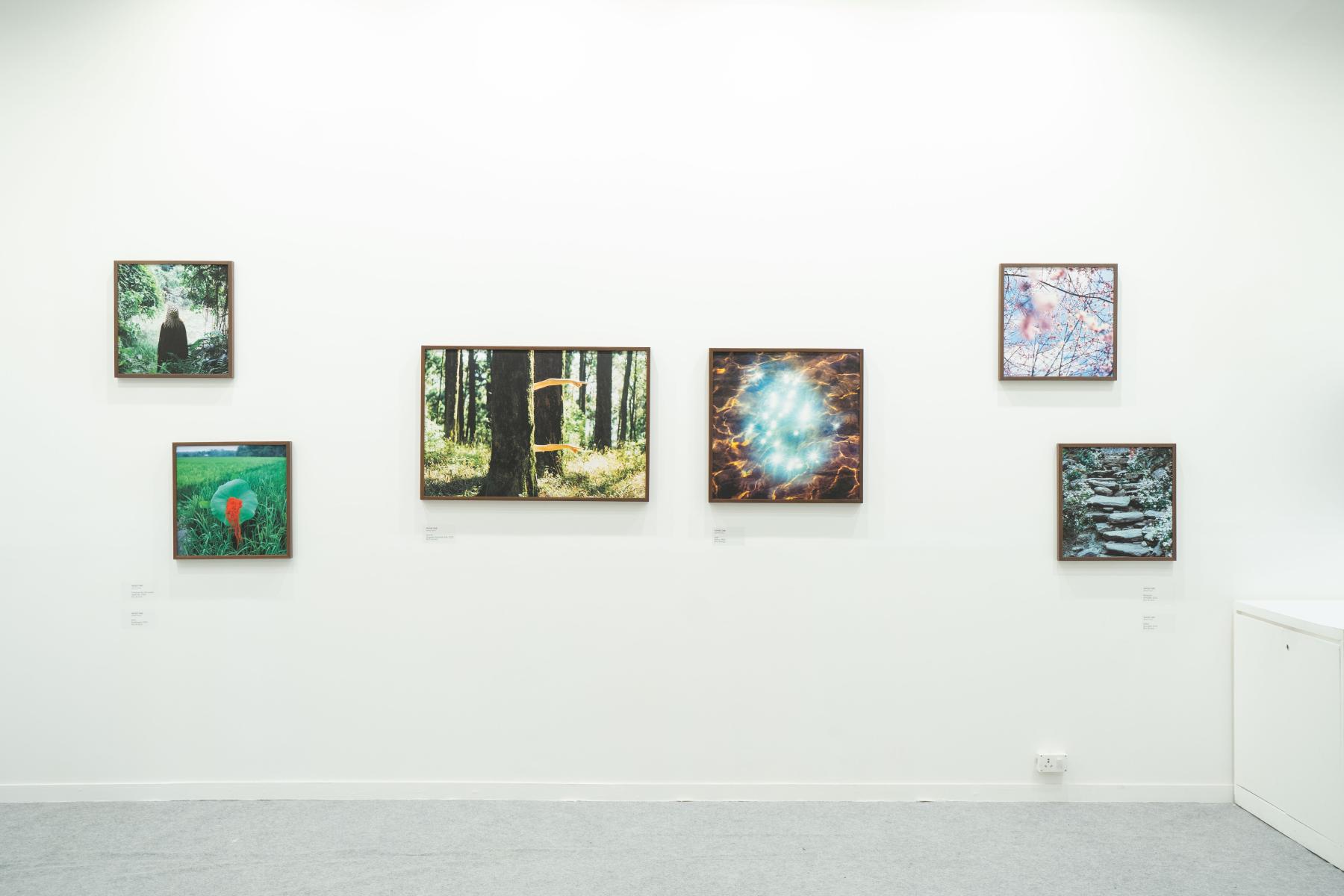
Abhijit Deb. An Odyssey, 2022-ongoing.
Given their commitment to promoting alternative media practices from the north-east, Egaro highlights concerns of identity, history, sustainability, folklore and indigenous counter culture. The artists, each bringing their own lived experience and worldviews into their artistic practice, uniquely position their experimentations with mixed-media. They exhibited a selection of works at IAF by Abhijit Deb, Milo Ankha, Kunga Tashi Lepcha, Ploto Debbarma and Adwaita Chakma.
Deb, born and raised in Agartala, Tripura, presented his ongoing series An Odyssey (2022-ongoing). Based upon the vast range of folklore that abides in the region, the artist weaves together a visual story that is grounded in personal history and cultural identity. Upon spending some time with the individual works, the abstract portraits seem to be interlinked through the ephemerality of the images. There is an element of magic in the way Deb frames his subjects, almost treating the ecological abundance within the frame as the main character in his image-making practice.
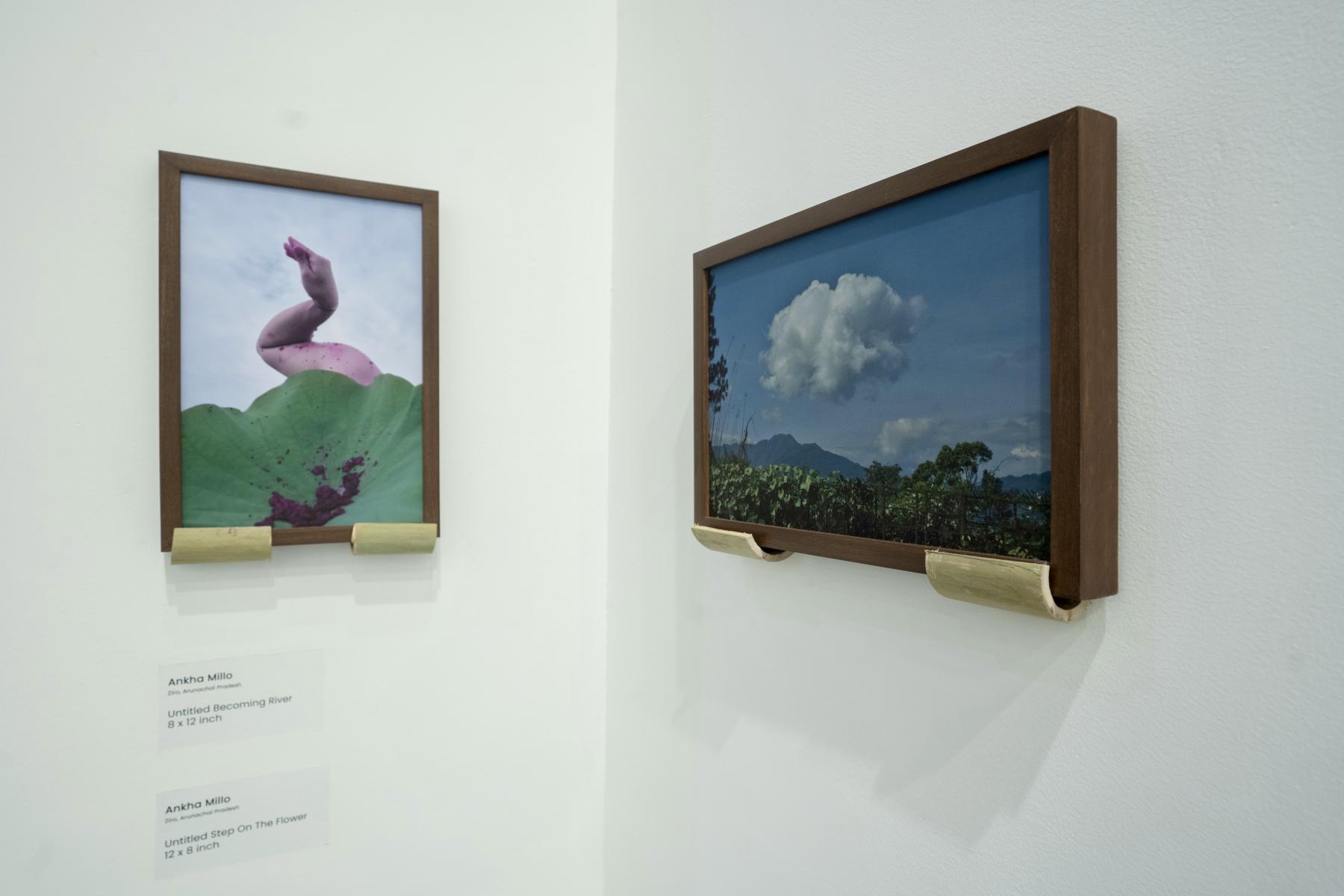
Milo Ankha. Becoming River, 2023.
Millo Ankha’s project Becoming River (2023) presents visual documentation of her performance that was heavily influenced from the terrestrial deities of her native hometown Ziro in Arunachal Pradesh. The artist pays ode to her roots, and also acknowledges her own dreams through the act of performance. The photographs that emerge from the process capture the fleeting moments, and which in turn serve as a medium for the artist to diversify her enquiries within themes of gender, environment, indigenous rights and cultural knowhow.
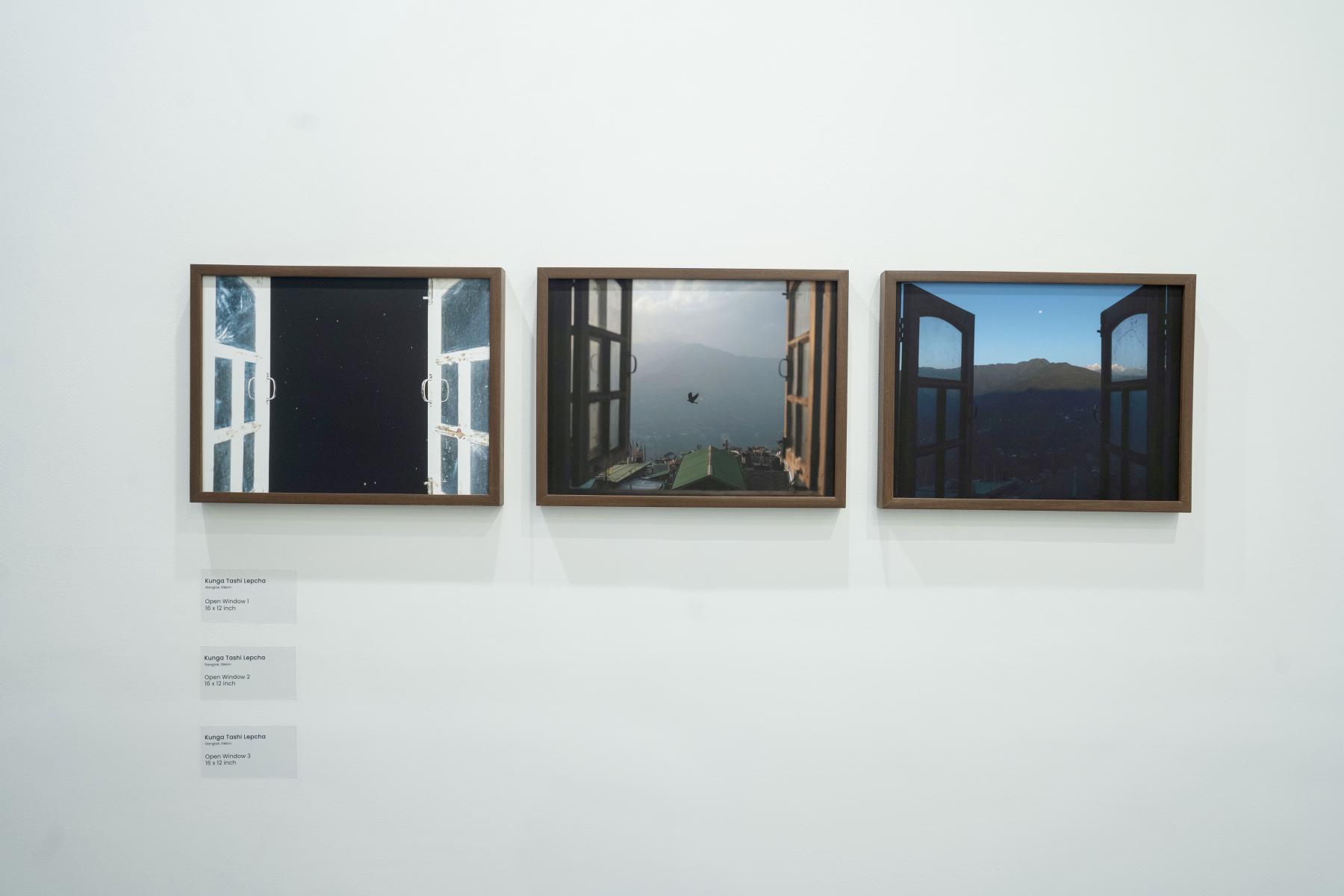
Kunga Tashi Lepcha. Open Window, 2020-ongoing.
Situated right next to Ankha’s works, Gangtok-based artist Kunga Tashi Lepcha’s individual landscapes of the Kanchenjunga under Open Window (2020-onoing), taken from a window in the hills, recall themes of ecology and indigenous meaning-making of their immediate neighbourhood. The mighty Kanchenjunga, worshipped as a deity amongst the Lepcha tribe, remains central to Kunga’s portraits as day turns to night and the surrounding landscape changes with shifting light and shadows.
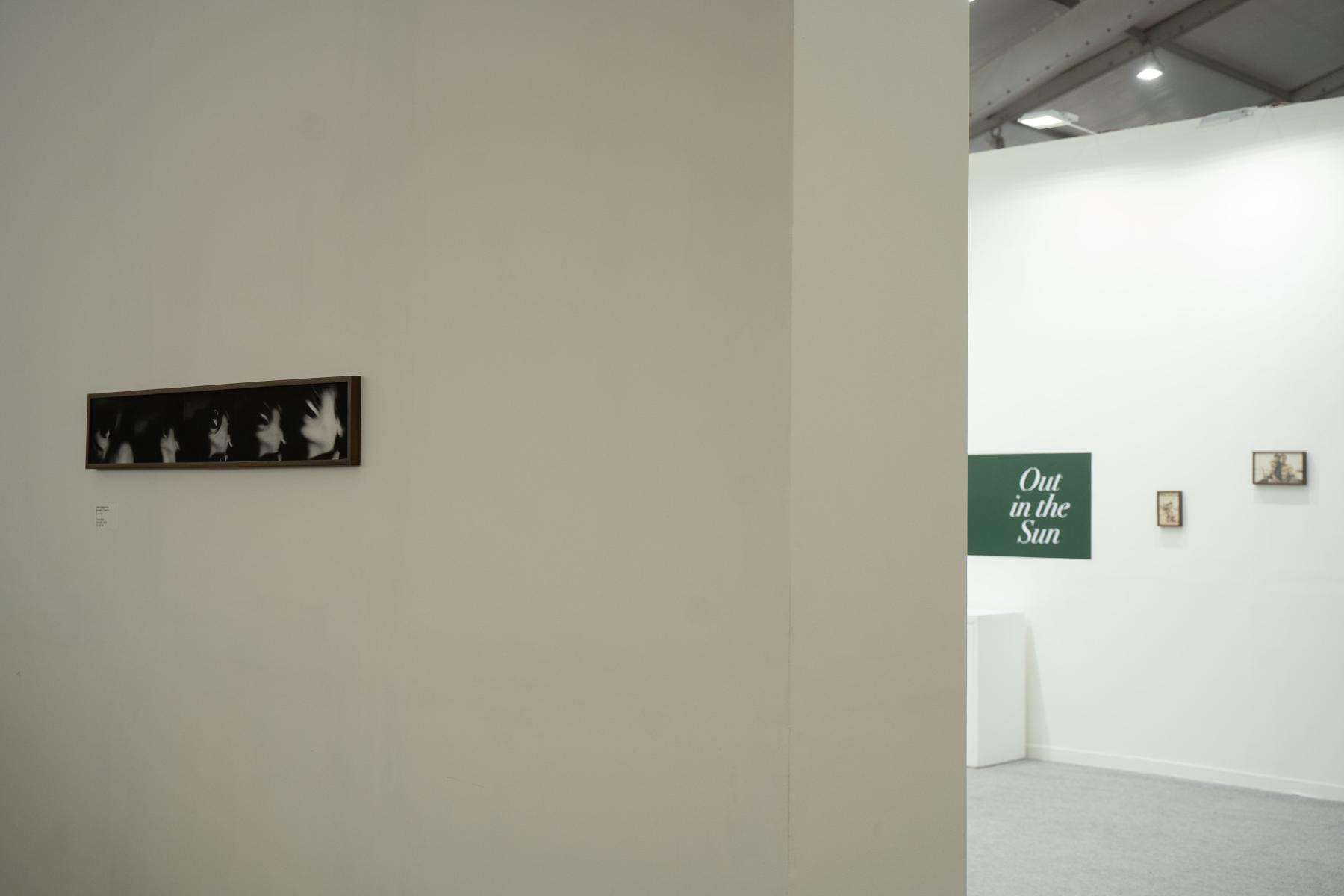
Ploto Debbarma and Adwaita Chakma. Graveyard of Dreams, 2023.
Also present is a series of images from Ploto Debbarma and Adwaita Chakma’s award-winning short fiction film Graveyard of Dreams (2023). The duo, hailing from Tripura, draw from their individual experiences of struggles faced in mainland India when it comes to their work. The duo outlined stills from the short film, offering a look at the consequences of the substance abuse endemic to north-eastern India.
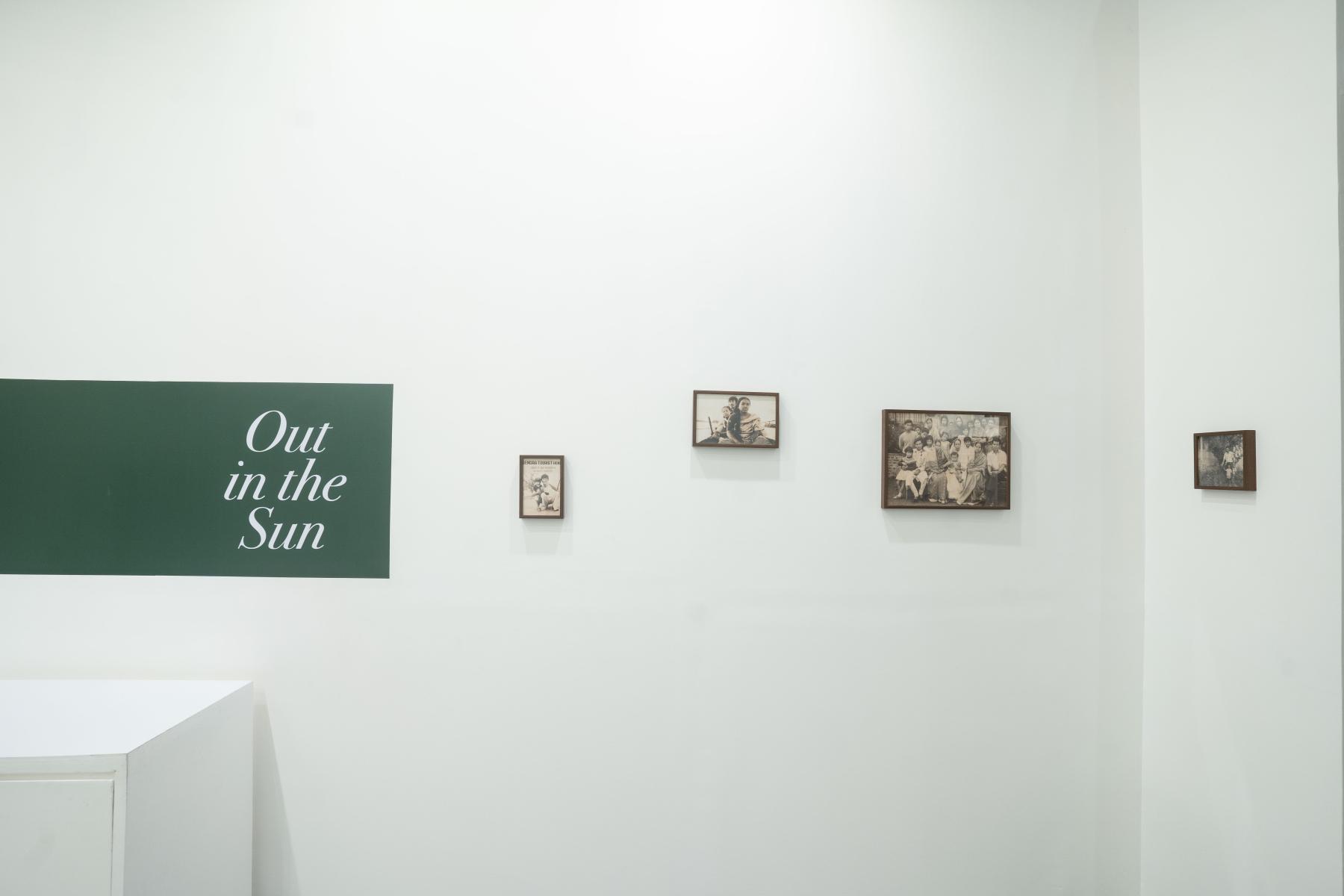
Egaro Photo Festival, Out in the Sun, 2022-ongoing.
Apart from the individual artist works presented, Egaro’s archival programme Out in the Sun (2022-ongoing) adds another layer to the collective’s commitment to indigenous narratives from the north-east. Started as an attempt at documenting the demographic history and cultural milieu of the region, the developing archive presents an opportunity to celebrate the community and generate much-needed documentation of the personal and the public memory of north-eastern India. Diptanil Das, one of the co-founders shared in a conversation with the writer, “The act of this show in itself is akin to the unravelling of precious bits of memory from trunks and boxes of our houses and bringing them together in a courtyard- sitting in circles and sharing them as one big family.” The collective’s mandate in the arts offers much-needed potential for highlighting the thriving artistic imagination emerging from the north-east. Their attention-to-detail, ownership of indigenous identity and presentation of themes from personal history to ecology make their ongoing efforts to platform practices essential and important to keep an eye out for in the future.
To learn more about the work of collectives across South Asia, read Veeranganakumari Solanki’s essay on The Confluence Collective, Anisha Baid’s two-part conversation with Exhausted Geographies, Ankan Kazi’s essay on the work of People’s Archive of Rural India (PARI) and Veeranganakumari Solanki’s curated selection of works by the collective Eight Thirty.
Images courtesy of Sayandeep Roy, Abhijit Deb and Sagar Talukder.




